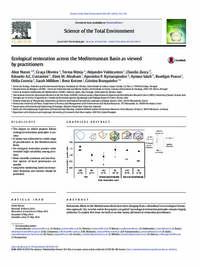Ecological restoration across the Mediterranean Basin as viewed by practitioners

Authors:
Restoration efforts in the Mediterranean Basin have been changing from a silvicultural to an ecological restoration
approach. Yet, to what extent the projects are guided by ecological restoration principles remains largely
unknown. To analyse this issue, we built an on-line survey addressed to restoration practitioners. We analysed 36 restoration projects, mostly from drylands (86%). The projects used mainly soil from local
sources. The need to comply with legislation was more important as a restoration motive for European Union
(EU) than for non-EU countries, while public opinion and health had a greater importance in the latter. Non-
EU countries relied more on non-native plant species than EU countries, thus deviating from ecological restoration
guidelines. Nursery-grown plants used weremostly of local or regional provenance,whilst seedsweremostly
of national provenance. Unexpected restoration results (e.g. inadequate biodiversity)were reported for 50% of
the projects and restoration success was never evaluated in 22%. Long termevaluation (N6 years) was only performed
in 31% of cases, and based primarily on plant diversity and cover. The use of non-native species and species
of exogenous provenances may: i) entail the loss of local genetic and functional trait diversity, critical to cope
with drought, particularly under the predicted climate change scenarios, and ii) lead to unexpected competition
with native species and/or negatively impact local biotic interactions. Absent or inappropriate monitoring may
prevent the understanding of restoration trajectories, precluding adaptive management strategies, often crucial
to create functional ecosystems able to provide ecosystem services. The overview of ecological restoration projects
in theMediterranean Basin revealed high variability among practices and highlighted the need for improved
scientific assistance and information exchange, greater use of native species of local provenance, and more longterm
monitoring and evaluation, including functional and ecosystemservices' indicators, to improve and spread
the practice of ecological restoration.
